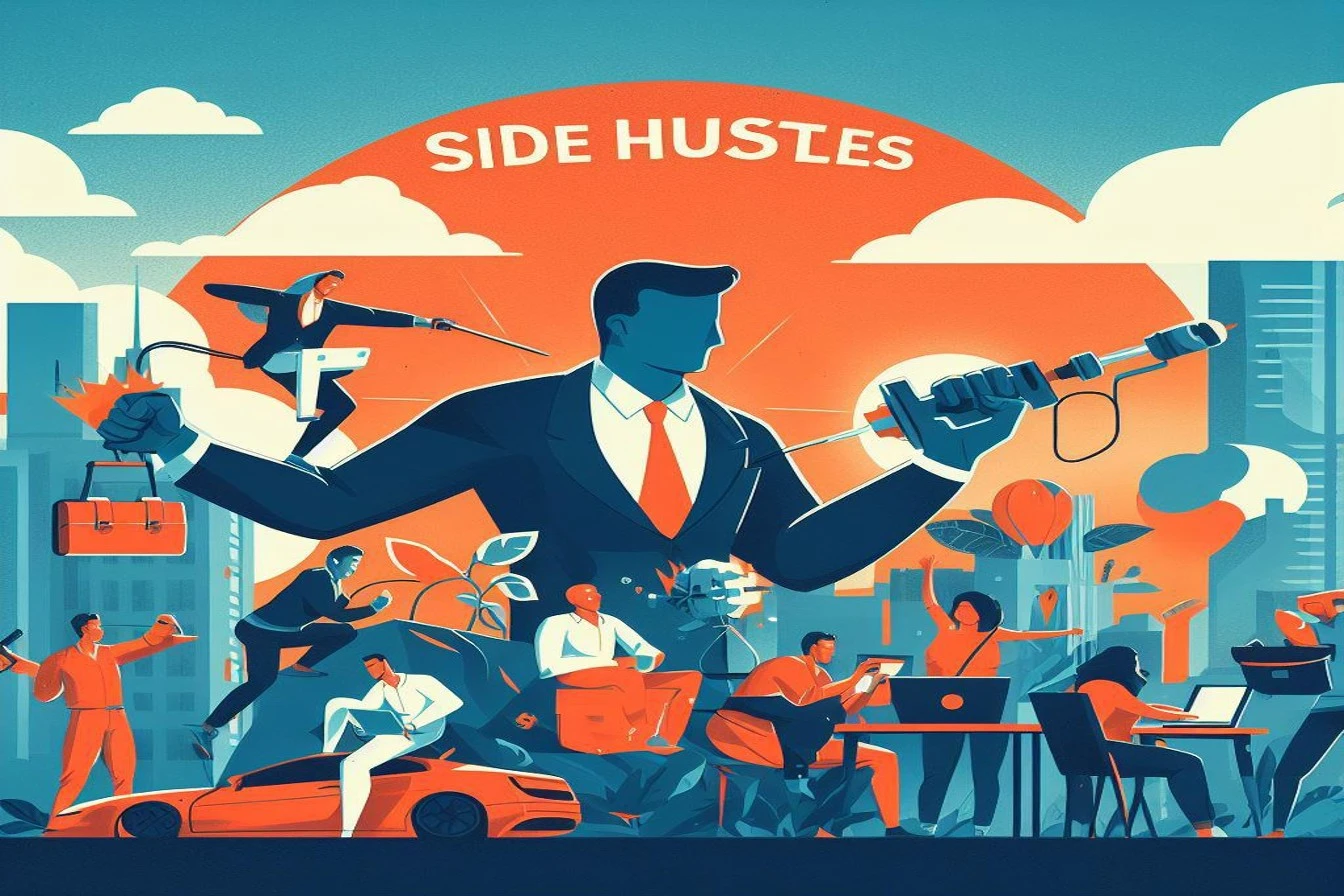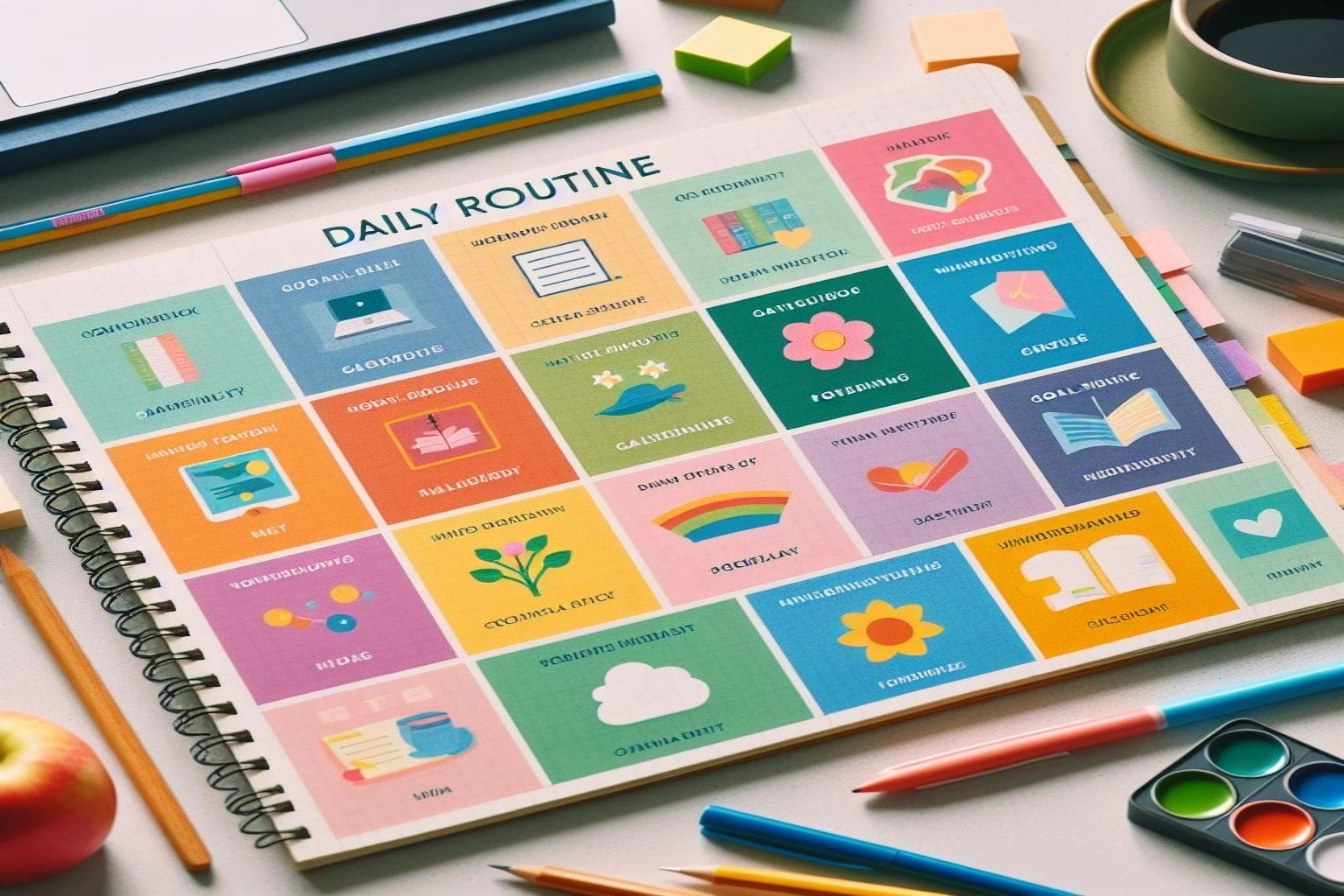
Side hustles have exploded in popularity in recent years. With unstable job markets and stagnant wages, many people are turning to side gigs as a way to supplement their income. Apps and online platforms have made it easy for anyone to monetize their skills, time, or assets with just a few clicks.
The allure of side hustles is strong. You can make money doing something you enjoy, reach your financial goals faster, or build a new revenue stream outside of your 9-5 job. Hustle culture promotes non-stop grind and side gigs as the path to wealth and freedom. But does this rosy view reflect reality?
In this post, we’ll examine the pros and cons of side hustles, debunk myths about requiring multiple income streams, and look at examples of side gigs that can make sense.
The Appeal of Side Hustles
It’s easy to understand why side hustles are surging in popularity. For many people, the traditional career path is failing to provide the income and security they expect.
Unstable Job Market
Layoffs and role elimination have become increasingly common, even at established companies. Loyalty between employers and employees has frayed. People realize they may need to rely on their own initiative to earn income at times rather than counting on an employer.
Stagnant Wages
Wage growth has lagged far behind productivity growth since the 1970s. The cost of living has dramatically outpaced salaries. Side hustles seem like a way for people to take matters into their own hands when their job isn’t providing sufficient income.
Desire for More Control
Holding a traditional job means handing over control to an employer. They dictate your daily tasks, schedule, policies, etc. Side hustles allow people to take back some autonomy. You choose your own working hours, services, customers, and more.
Supplementing Passion Projects
Many get stuck in unfulfilling jobs to pay the bills. Side hustles can create opportunities to monetize a passion like art, music, writing, baking, gardening, photography, coaching, consulting, and more. Doing what you love seems far better than just working for a paycheck.
Potential to Go Full-Time
Some side hustlers maintain the dream of their gig eventually replacing their regular job entirely. With grit and hard work, there’s the possibility of turning a passion into a thriving business.
With the traditional career path looking unstable or unappealing, taking income generation into your own hands with a side hustle appears to be an alluring solution. But this optimism often glosses over harsh realities.
The Downside of Side Hustles
Starting a profitable side hustle takes far more effort than the hype leads you to believe. Here are some of the biggest downsides to consider:
Time Commitment
Finding spare time for side work is difficult for anyone working a full-time job. Side hustles eat into your evenings, weekends, and any free time. After a long day at the office, it can feel draining to spend your downtime working more, even if it’s on something you enjoy.
Customer Service Burden
Many side gigs require ongoing customer management and satisfaction similar to running any business. Communicating with customers and providing frontline support can be a hassle. You may even need to be “on call” during off-hours.
Low Pay After Expenses
Sites like Uber and Etsy make it easy to find customers, but take a cut of your earnings. After accounting for costs like gas, inventory, software, advertising, etc., your actual pay can end up quite low. Most gig economy jobs don’t provide a livable income.
Irregular Cash Flow
Side income can fluctuate dramatically by month and season, especially for services like ridesharing or delivery. Summer months and holidays may see demand spike, while January could be brutal. This irregularity can make financial planning difficult.
Hard to Scale
There’s often limited upside with solopreneur side hustles. Only so many hours to provide a service yourself or make/sell a product. You eventually hit a revenue ceiling without hiring employees and developing a full-fledged business.
Stress Compounding
The heavier workload and juggling act causes many hustlers to feel increased anxiety and burnout. Instead of enjoying true time off, any spare time gets filled with hustle work and tasks.
Distraction from Main Job
Energy spent on a side gig is energy not spent improving in your regular career and increasing your baseline salary. Side income often comes at the cost of main income growth.
The extra effort and sacrifices required for side hustles mean the additional income may not seem worth it for many people. Understand the tradeoffs before diving in.
Debunking the Multiple Income Streams Myth
Conventional wisdom states that having multiple streams of income is essential to building wealth. But this belief tends to be oversold and misinterpreted.
The claim originates from a 2002 IRS study showing that the average millionaire has around seven distinct sources of income. These include:
- Active earned income
- Dividends
- Interest
- Capital gains
- Rental income
- Royalties
- Business profits
On the surface, this data seems to validate the idea that cobbling together multiple income streams should be your ticket to prosperity.
But looking closer reveals some important context:
- Most of those millionaires built their wealth through one successful business or high-paying career.
- Many of the additional income streams came passively from assets they already owned outright.
- Only 29% actually had 5 or more active income streams. Most had just 3.
The average person shouldn’t extrapolate strategies from the financial profiles of those who are already millionaires. Their situations reflect having abundant wealth, not how they necessarily attained it.
For the rest of us starting out, trying to juggle a bunch of side gigs and income sources rarely leads to outstanding success with any single one. We only have so much time and mental bandwidth.
Spreading yourself too thin makes it hard to gain expertise in any one area. You won’t achieve the success possible through focus and specialization. Most people can really only handle one main breadwinner activity at a time.
The reality is that the vast majority who build substantial wealth do it through one standout career, business, investment, or inheritance. There’s nothing wrong with some income diversity, but multiple streams should support your core earning engine, not distract from it.
When Do Side Hustles Actually Make Sense?
I don’t want to completely discourage side hustles. In the right circumstances, taking on a side gig can be smart. Here are some examples of when it makes sense:
Validating a Business Idea
Testing out a business concept with a side hustle lets you get firsthand experience before fully committing. See if the work aligns with your skills and interests. Determine if customers respond positively. Work out kinks before investing serious time and money.
Use side income to validate your business has potential before taking the full-time plunge.
Predictable Extra Income
Some side gigs offer more steady demand than others. Pet sitting, childcare, lawn mowing, tutoring, and freelance writing tend to be basics that customers always need. The more predictable your side earnings, the better for planning.
Monetizing Underutilized Assets
Apps like Turo and GetAround let you rent out your car when not using it. Cozy makes it easy to rent extra rooms or vacant properties. You can charge for access to your driveway, parking spot, storage space, pools, tools, equipment, and more.
Profiting from Your Passion
Monetizing a hobby like music, crafts, baking, gardening, photography, art, coaching, consulting, etc. works best if you genuinely enjoy the activity. Be wary of turning a pastime you love into unappealing work.
Bridging an Income Gap
Short-term side gigs can help replace lost income in between jobs or cover a specific one-time expense. They serve as a stopgap income source when needed to bridge a temporary gap.
The key is to be selective and strategic about any side hustles rather than trying to monetize every spare moment out of a scarcity mindset. Have clear goals and parameters for side income to supplement your regular job rather thanbecoming an overwhelmed “solopreneur”.
Viable Side Hustle Strategies
Approached thoughtfully, here are some of the more reasonable ideas for supplemental side income:
Rent Out Your Home or Rooms
Apps like Airbnb, VRBO and Hipcamp let you earn cash renting your home or spare rooms to travelers. You set availability so it works around your schedule. Consider renting a vacation property too. But research rules in your area first.
Sell Handmade Goods and Crafts
Etsy, eBay, and social platforms make it easy to sell homemade crafts, jewelry, art, clothing, candles, soaps, skincare, baked goods, and more to a broad audience. Focus on unique creations with good margins.
Become a Notary Public
After training and certification, you can get paid to validate legal documents as a mobile traveling notary. Set your own schedule for this flexible remote work. Earn extra without needing to invest much.
Freelance Writing and Editing
If you have writing chops, sell your services to blogs, publishers, authors, businesses, and more online. Specialize in an area you know well. Build up a portfolio and client base. Flexible to do from anywhere.
Develop Apps and Websites
Freelance programmers and coders can earn well building apps, sites, and custom software for clients. Offer Web development services from simple sites to ecommerce.
Photography and Videography
Sell your photo and video services to local businesses, hotels, venues, real estate agents, social media influencers, and more. Focus on high quality and building a strong portfolio.
Consulting and Coaching
Monetize your industry expertise, knowledge, and skills by advising organizations and individuals as an independent consultant. Explore options like career coaching too. Leverage skills from your day job.
Teach a Skill
Create online courses on platforms like Udemy, Skillshare, and Teachable to share your knowledge. Topics like photography, marketing, coding, writing, yoga, and instruments can all appeal to students.
Translate Documents
If multilingual, provide freelance translation services on sites like Upwork and Fiverr. Look for agencies and companies that need translation help as well.
Garage-Based Repair Services
Offer mobile services in areas like appliance repair, computer repair, smartphone repair, watch repair, guitar repairs, and more. Come to the customer’s home or work for convenience.
Alternatives to Side Hustles
Here are a few options beyond side gigs that can improve your finances:
- Negotiate a Raise or Promotion – Increasing your main income often yields better returns than side work.
- Find a Higher Paying Primary Job – Look for companies that better compensate your existing skills and experience.
- Develop New Skillsets – Use some free time for courses, certifications, and training to increase your earning potential long-term.
- Invest Savings – Grow your money through compound interest over time rather than active side hustling.
- Reduce Expenses – Cut discretionary costs to free up more of your current income rather than working more.
Key Takeaways
Side hustles can provide nice supplemental income when approached strategically. But buying into hustle culture and overextending yourself with side gigs can easily do more harm than good.
Here are some key points to remember:
- Side hustles require far more effort and sacrifice than their rosy portrayal often suggests. Understand the pros and cons.
- Having multiple income streams is unnecessary for most. Focus on increasing your main income source above all.
- Approach side gigs selectively in ways that align with your interests and goals, not out of a scarcity mindset.
- Maximize and progress in your primary career. Use side income to complement your main income rather than distract.
Rather than normalized hustle, focus your energy toward purpose, efficiency, and leverage to achieve financial success and fulfillment.
Summary
Side hustles can provide nice supplemental income when approached strategically. But buying into hustle culture and overextending yourself with side gigs can easily do more harm than good. Evaluate side hustle opportunities skeptically, play to your strengths, and focus on increasing your primary income source as the most reliable path to financial success.







